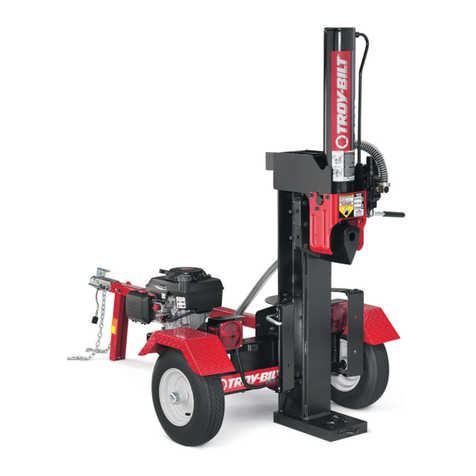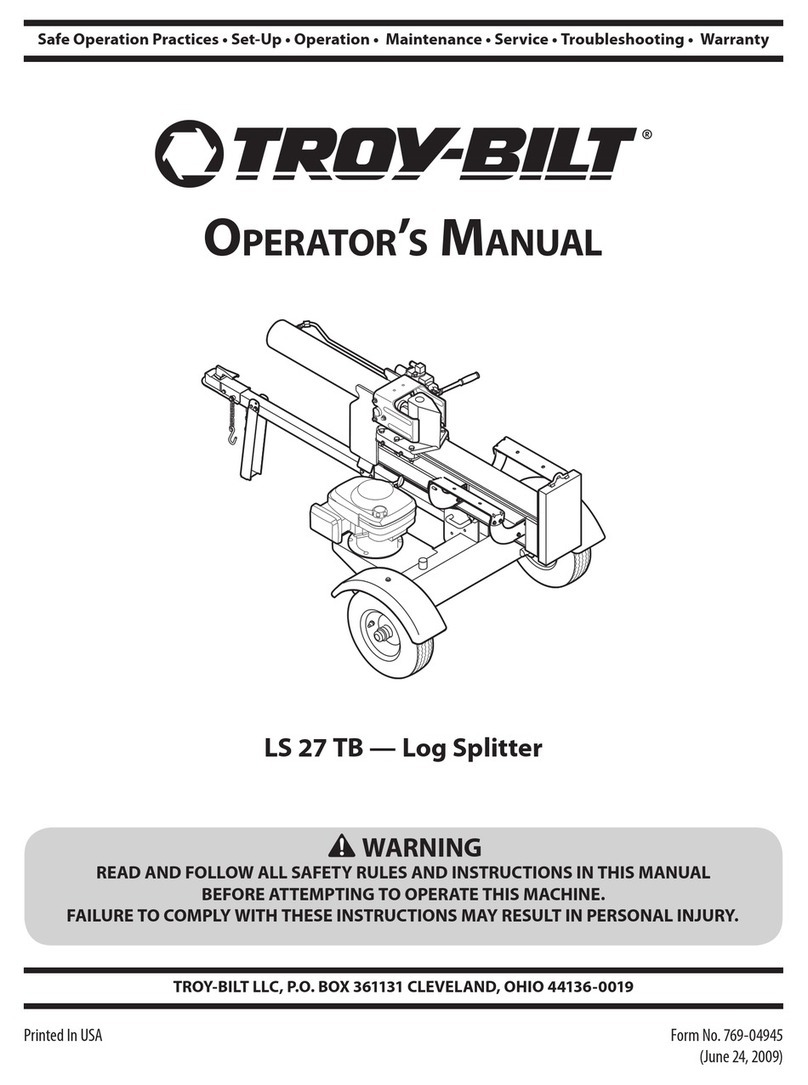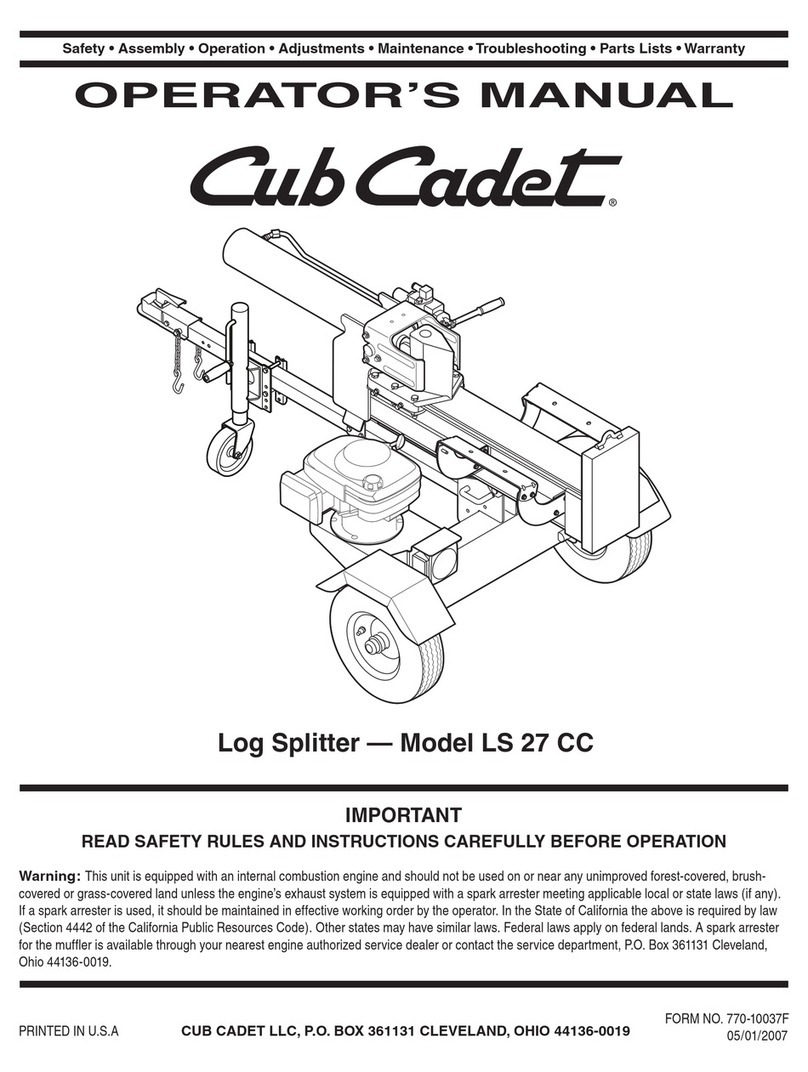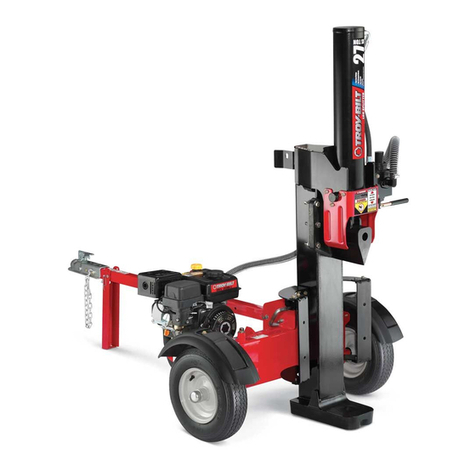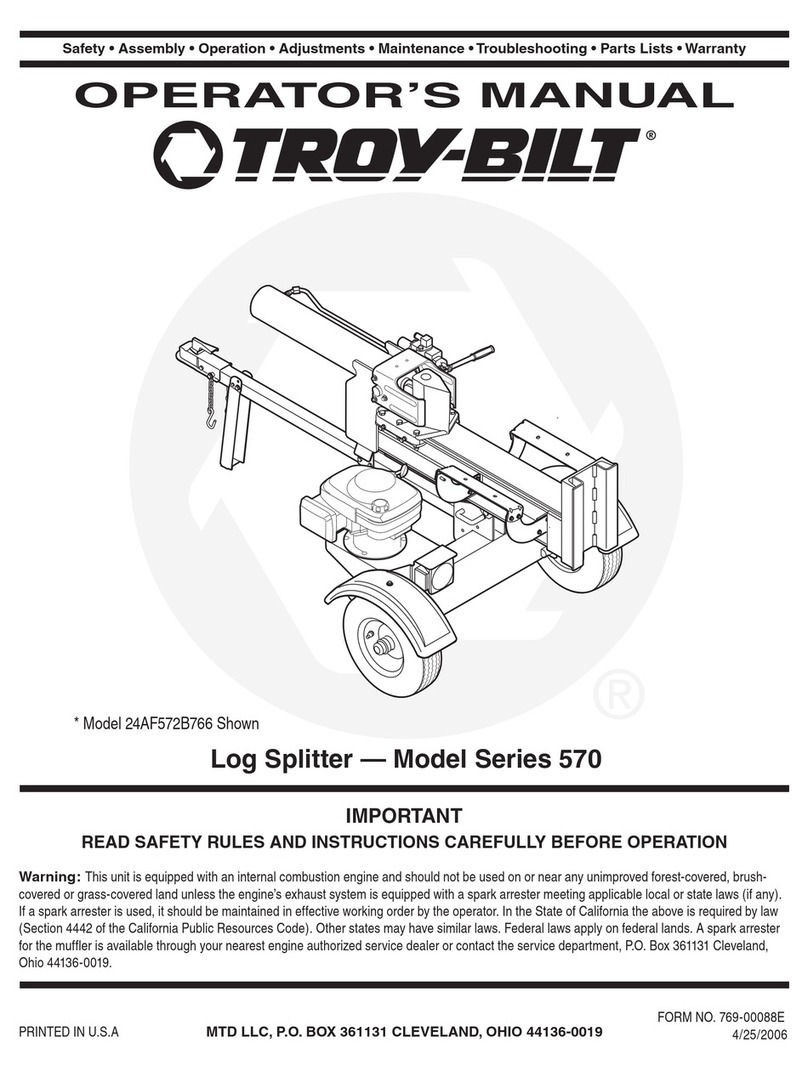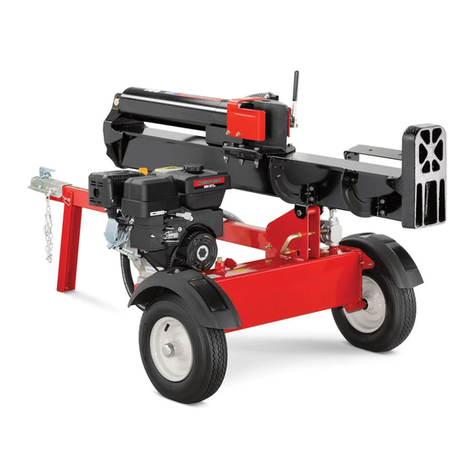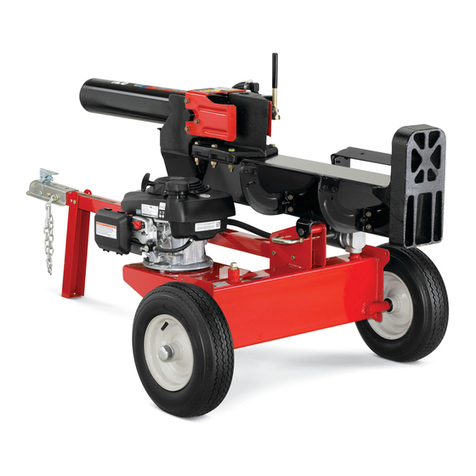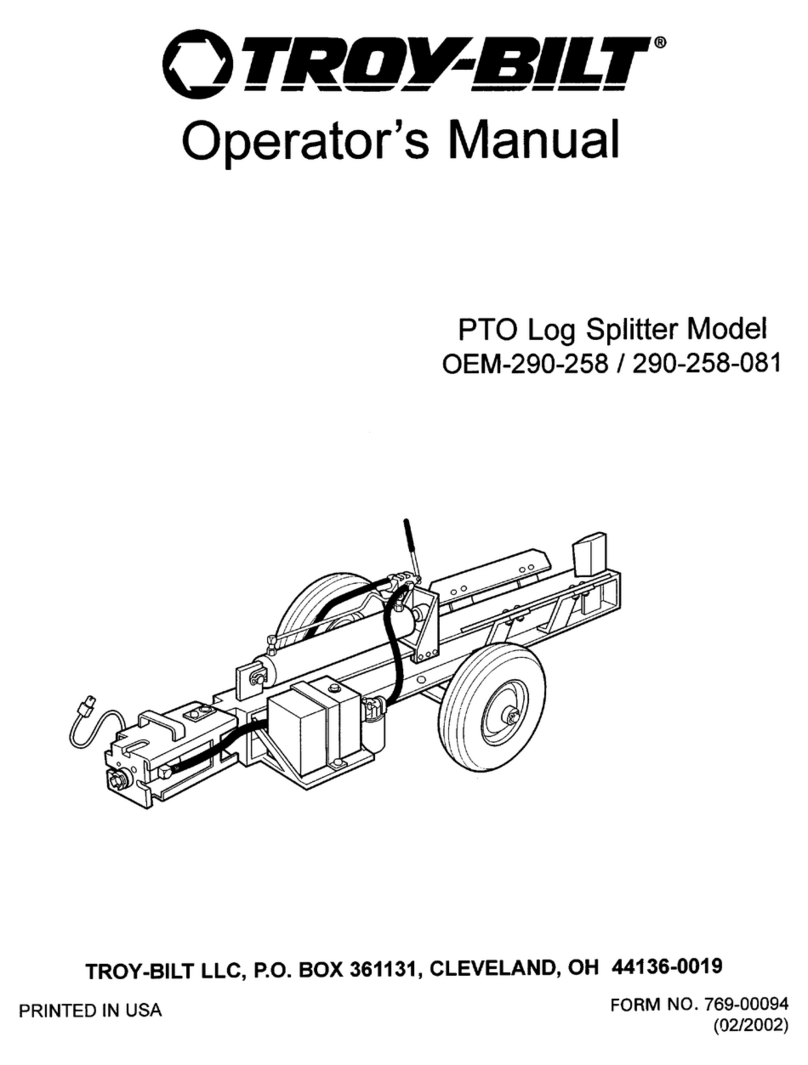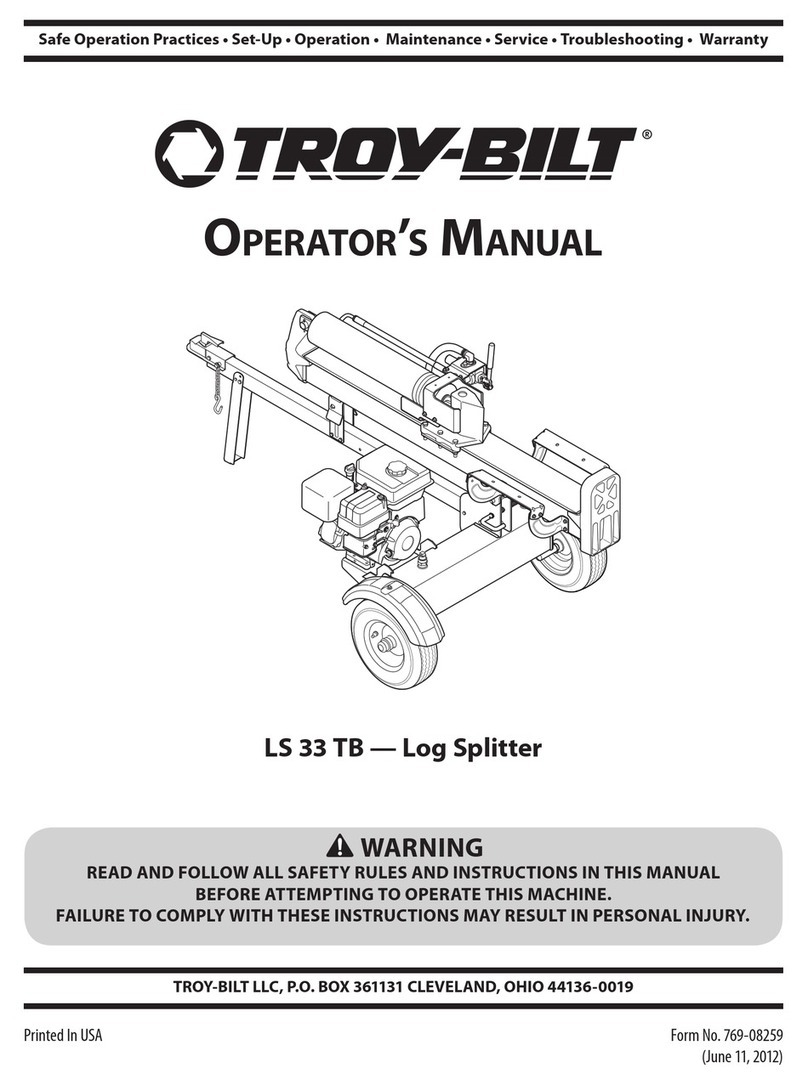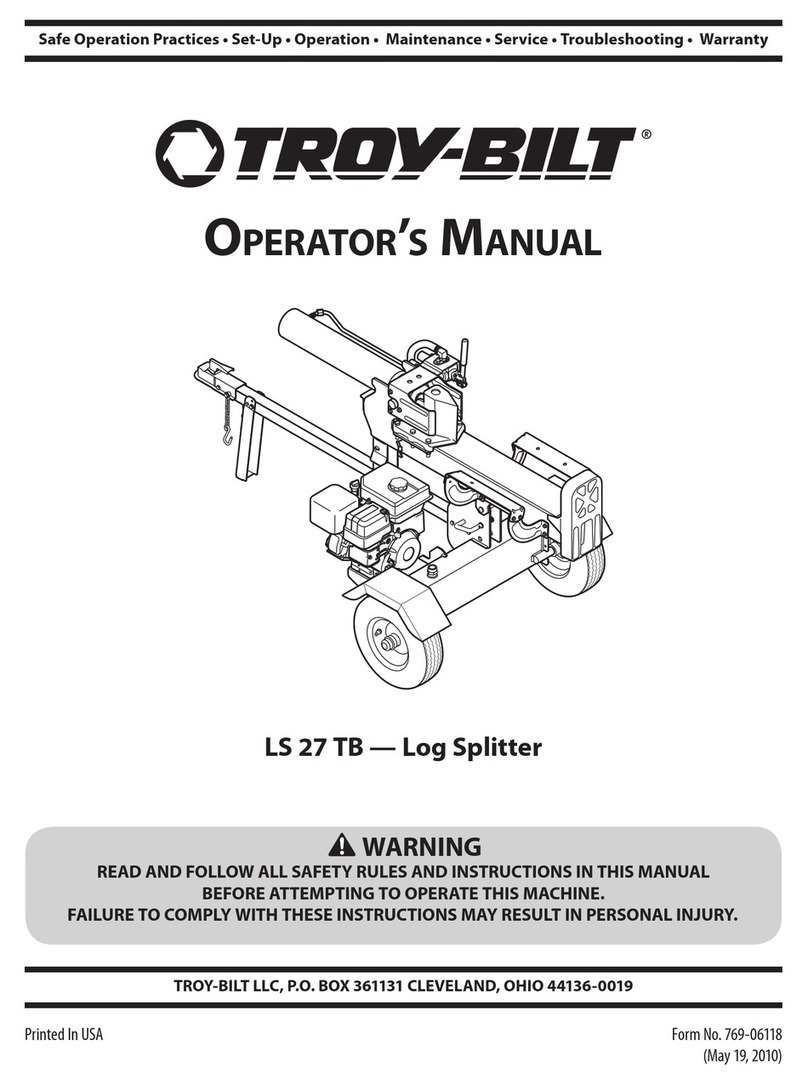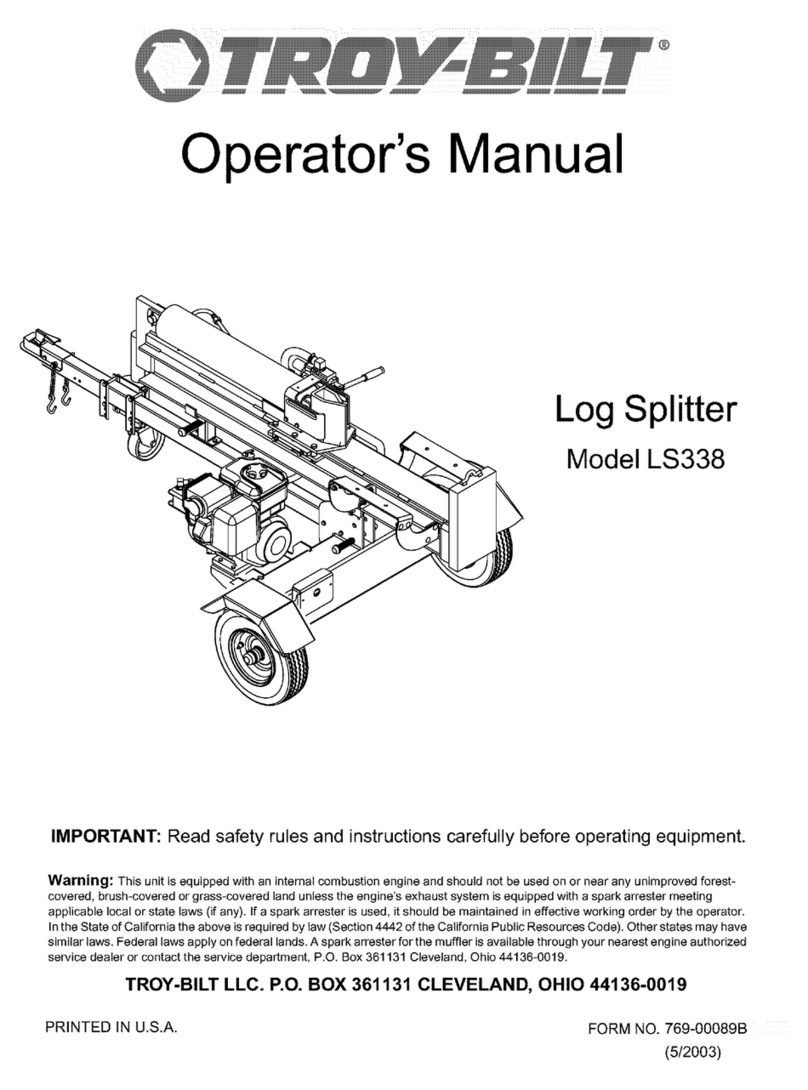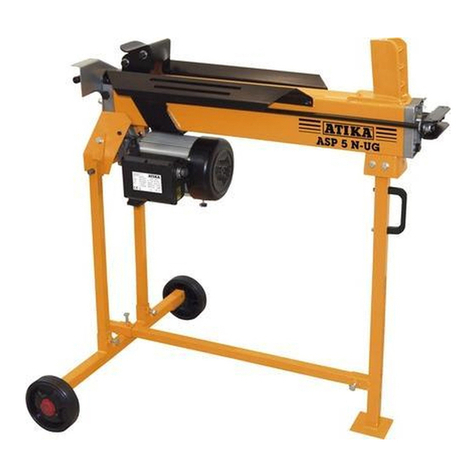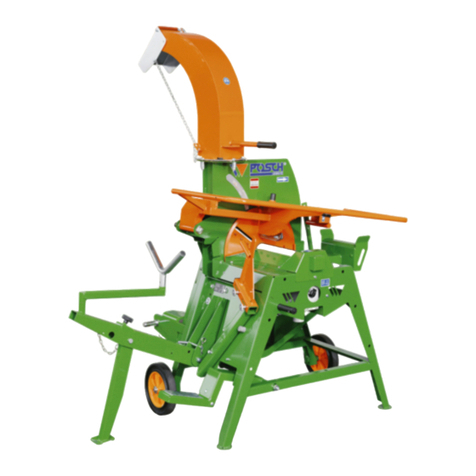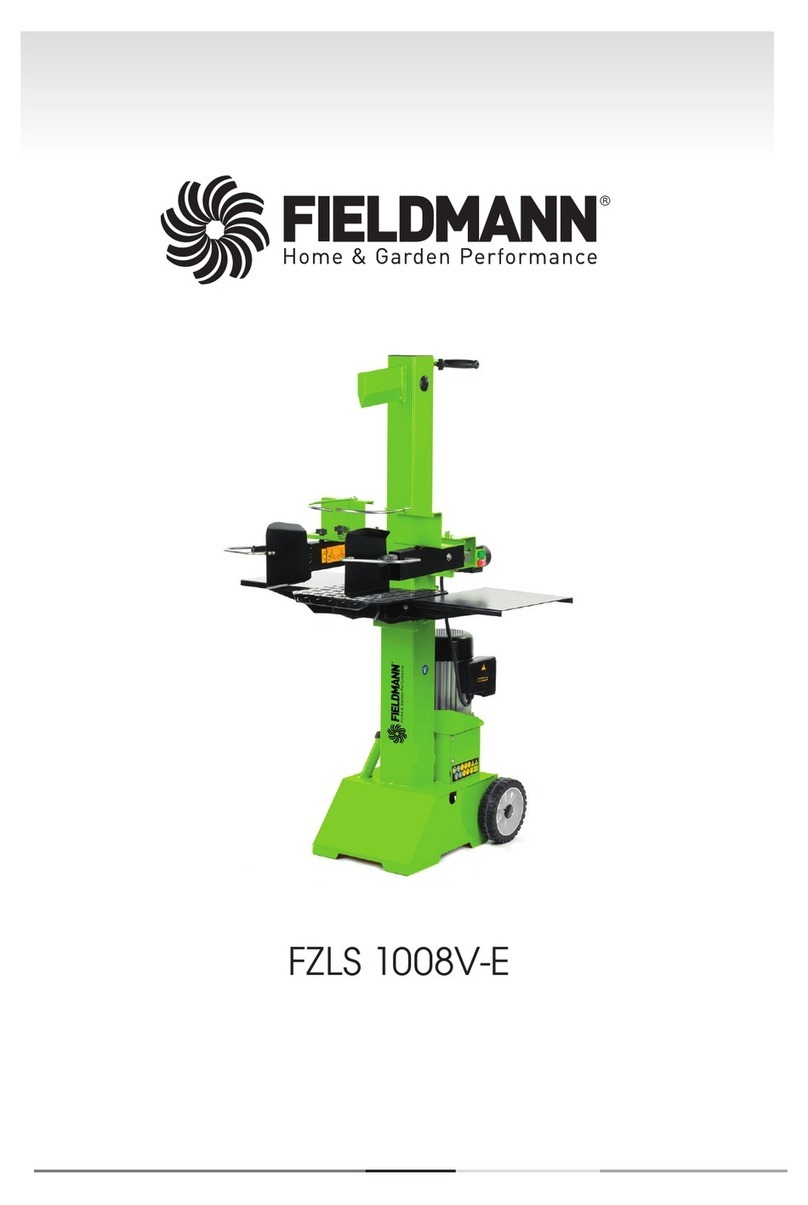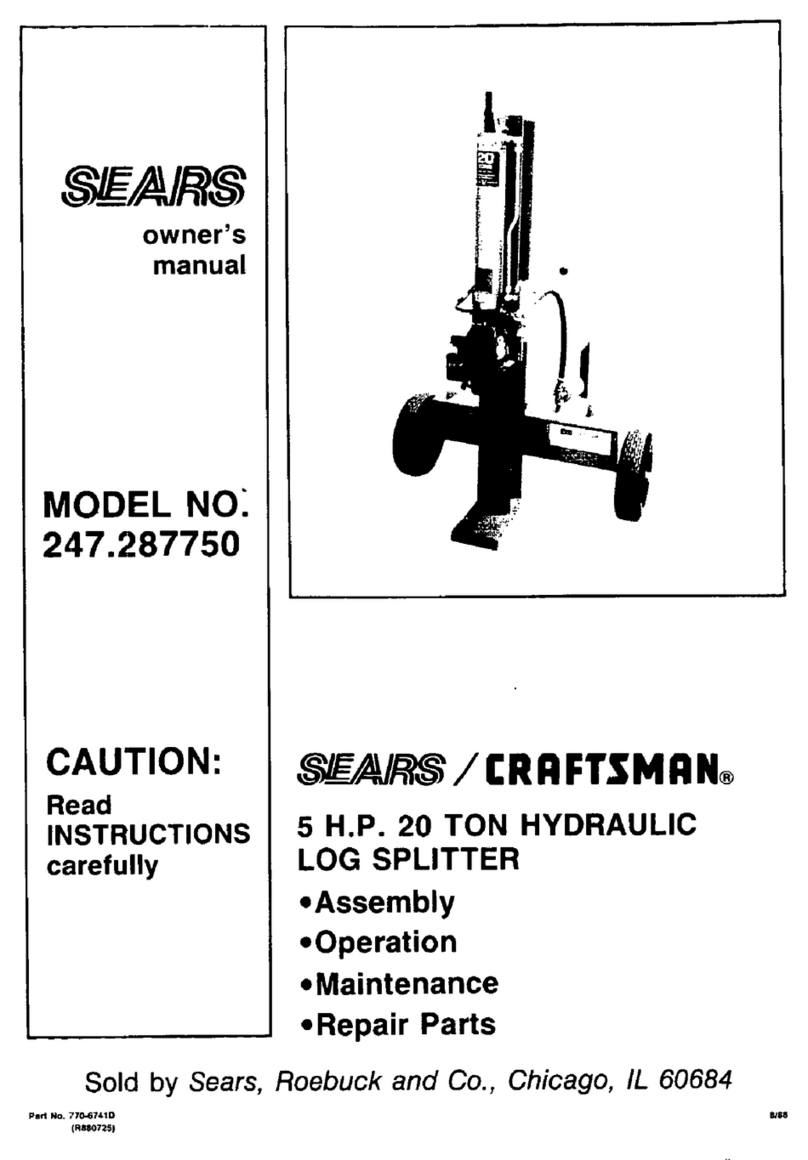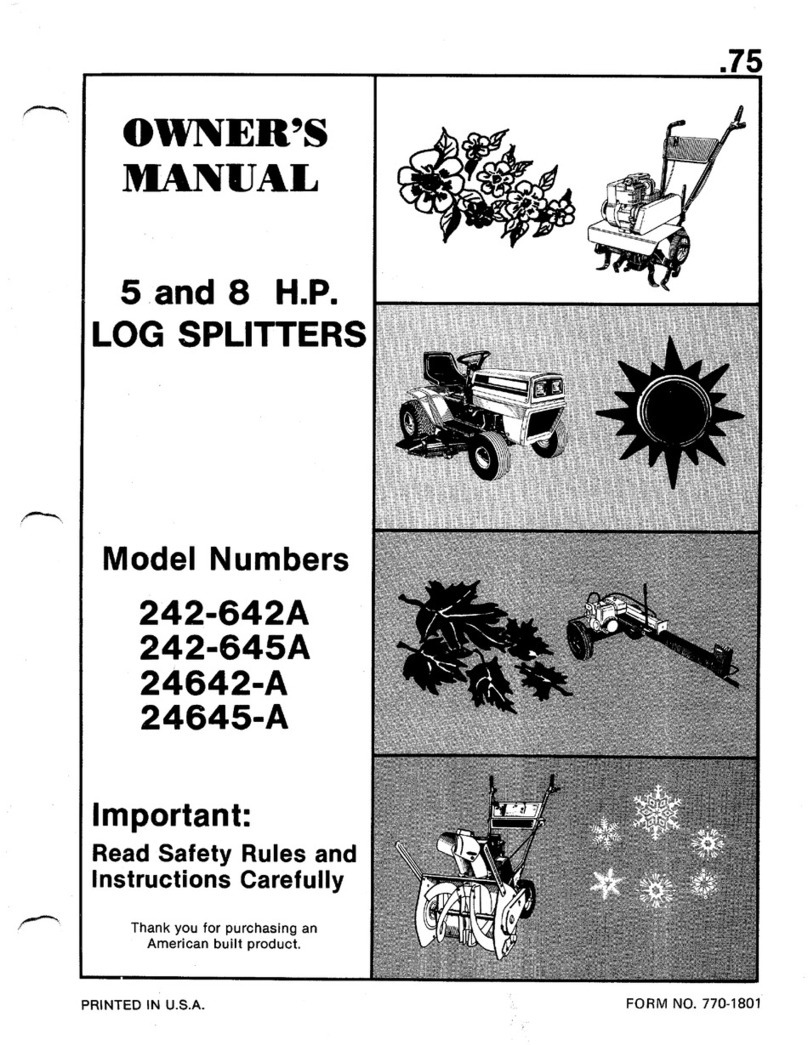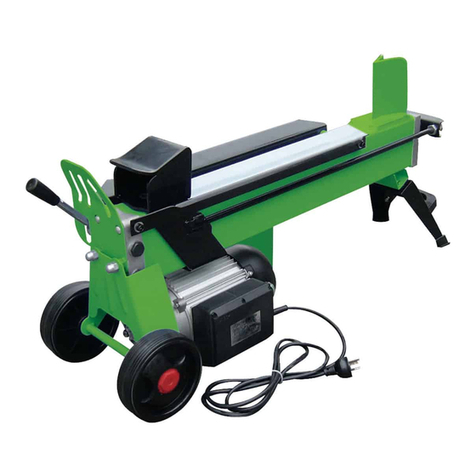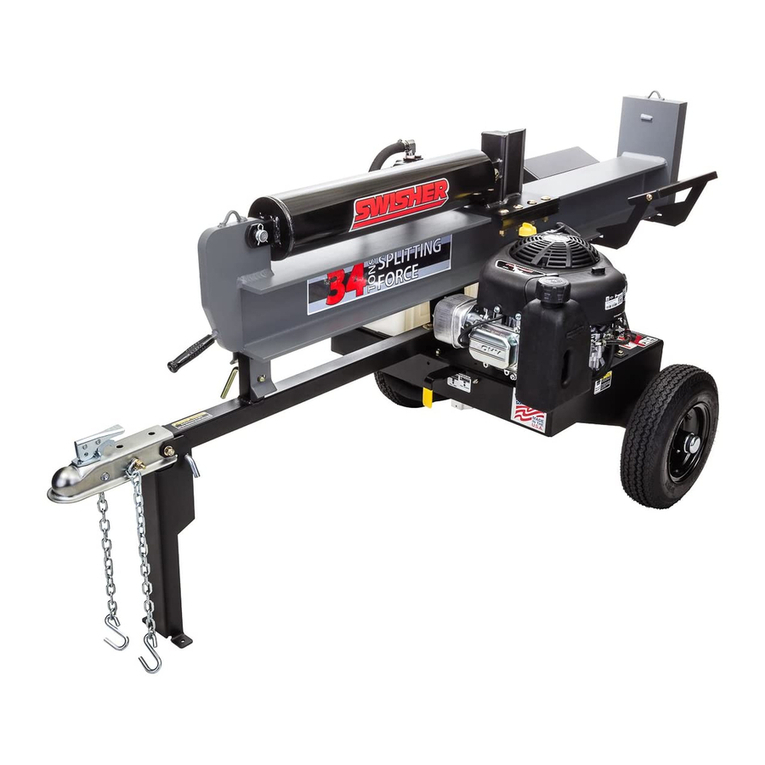
4se c t i O n 2 — iM p O r t a n t sa f e Op e r a t i O n pr a c t i c e s
This machine should be used for splitting wood only, do14.
not use it for any other purpose.
Follow the instructions in the manual(s) provided with any15.
attachment(s) for this machine.
Preparation
Always wear safety shoes or heavy boots.1.
Always wear safety glasses or safety goggles when2.
operating this machine.
Never wear jewelry or loose clothing that might become3.
entangled in moving or rotating parts of the machine.
Make sure machine is on a level surface before operating.4.
Always block wheels to prevent unintended movement,5.
and lock beam in either the horizontal or vertical position.
Always operate this machine from the operator zone(s)6.
specified in the manual.
Logs should be cut with square ends prior to splitting.7.
Use log splitter in daylight or under good artificial light.8.
Safe Handling of Gasoline
To avoid personal injury or property damage use extreme care
in handling gasoline. Gasoline is extremely flammable and the
vapors are explosive. Serious personal injury can occur when
gasoline is spilled on yourself or your clothes which can ignite.
Wash your skin and change clothes immediately.
Use only an approved gasoline container.a.
Extinguish all cigarettes, cigars, pipes, and otherb.
sources of ignition.
Never fuel machine indoors.c.
Never remove gas cap or add fuel while the engine isd.
hot or running.
Allow engine to cool at least two minutes beforee.
refueling.
Never overfill the fuel tank. Fill tank to no more thanf.
1/2 inch below bottom of filler neck to provide space
for fuel expansion.
Replace gasoline cap and tighten securely.g.
If gasoline is spilled, wipe it off the engine andh.
equipment and move machine to another area. Wait
five (5) minutes before starting the engine.
Never store the machine or fuel container insidei.
where there is an open flame, spark or pilot light
as on a water heater, space heater, furnace, clothes
dryer or other gas appliances.
Allow machine to cool at least five (5) minutesj.
before storing.
Operation
Before starting this machine, review the “Safety1.
Instructions”. Failure to follow these rules may result in
serious injury to the operator or bystanders.
Never leave this machine unattended with the engine2.
running.
Do not operate machine while under the influence of3.
alcohol, drugs, or medication.
Never allow anyone to operate this machine without4.
proper instruction.
Always operate this machine with all safety equipment5.
in place and working. Make sure all controls are properly
adjusted for safe operation.
Operator Zone6.
Horizontal Operating Position: Stand on the control a.
lever side of the log splitter in front of the wheel as
shown in Fig. 2-1.
Vertical Operating Position: Stand in front of the b.
beam and log as shown in Fig. 2-1.
When loading a log, always place your hands on the sides7.
of the log, not on the ends, and never use your foot to help
stabilize a log. Failure to do so, may result in crushed or
amputated fingers, toes, hand, or foot.
Use only your hand to operate the controls.8.
Never attempt to split more than one log at a time.9.
For logs which are not cut square, the least square end and10.
the longest portion of the log should be placed toward the
beam and wedge, and the square end placed toward the
end plate.
When splitting in the vertical position, stabilize the log11.
before moving the control. Split as follows:
Place log on the end plate and turn until it leans a.
against the beam and is stable.
When splitting extra large or uneven logs, the logb.
must be stabilized with wooden shims or split wood
between the log and end plate or ground.
Always keep fingers away from any cracks that open in12.
the log while splitting. They can quickly close and pinch or
amputate your fingers.
